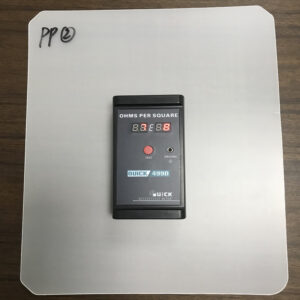What is the anti static property of plastics?
The anti static property of plastics refers to the ability of plastic materials to resist or reduce the generation and accumulation of static electricity and to quickly dissipate static electricity.
Ordinary plastics are prone to generate static electricity due to friction and other reasons during use and may accumulate for a long time and be difficult to dissipate. Plastics with good anti static properties can effectively inhibit the formation of static electricity, or enable the generated static electricity to be released or conducted away quickly, thereby avoiding a series of adverse effects caused by static electricity, such as adsorbing dust, causing sparks and causing dangers, and interfering with the normal operation of electronic equipment. Antistatic performance is usually measured and evaluated through some specific indicators and test methods.

How to improve the anti static properties of plastics?
The following are some methods to improve the anti static properties of plastics:
- Adding antistatic agents: This is a more common method, by adding suitable antistatic agents to plastics to improve their conductivity.
- Blending conductive fillers: such as carbon black, metal powder, carbon fiber, etc., blended with plastics to form a conductive network.
- Surface coating: Apply an antistatic coating on the surface of the plastic.
- Grafting modification: Grafting groups with antistatic functions on the plastic molecular chain by chemical methods.
- Increasing humidity: Properly increasing the humidity around the plastic under certain conditions can enhance the antistatic effect to a certain extent.
- Material compounding: Compounding with materials with good conductivity.
Common methods for testing anti static properties
- Surface resistance test: Place two electrodes on the surface of the material, then apply a certain voltage, measure the current passing through the surface of the material, and then calculate the surface resistance value according to Ohm’s law. The smaller the surface resistance value, the better the conductivity of the material surface, which means that its antistatic performance may be stronger; conversely, a larger surface resistance value indicates poor conductivity and relatively weak antistatic performance. This test method can more directly reflect the degree of resistance of the material surface to the passage of current and is one of the important indicators for evaluating the antistatic anti static properties of the material.
- Static decay time test: Charge the material through a specific device, and then measure the time required for its static charge to decay to a certain value (usually a certain proportion of the initial charge). The shorter this time, the stronger the material’s ability to dissipate static electricity, that is, the better the antistatic performance; conversely, the longer the time, the relatively weaker the antistatic performance. Through this test, we can quantitatively understand the characteristics of the material in terms of static dissipation, and provide a basis for material selection and improvement of anti static properties.
- Triboelectric voltage test: the material is rubbed against a specific friction object, and then a special instrument is used to measure the static voltage value generated on the surface of the material. The higher the triboelectric voltage, the easier it is for the material to generate higher static electricity during friction, and its antistatic performance is relatively poor; conversely, a lower triboelectric voltage indicates that the material has better antistatic performance and is not easy to accumulate a large amount of static electricity during friction.
- Charge half-life test: the time required for the charge on the material to decay by half is measured to evaluate the anti static properties.




